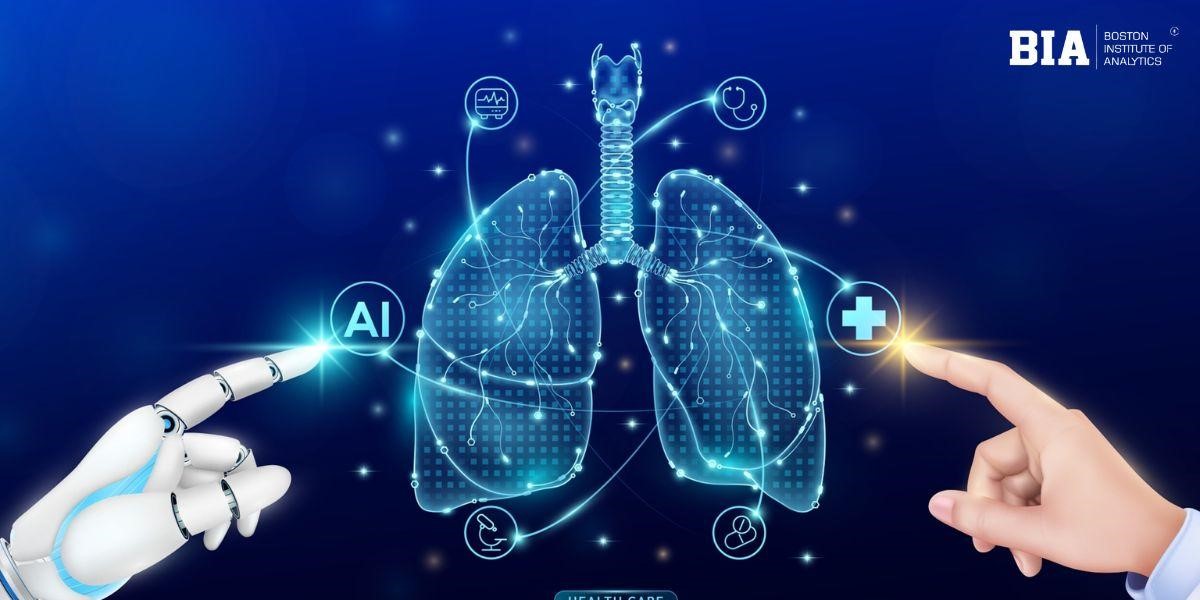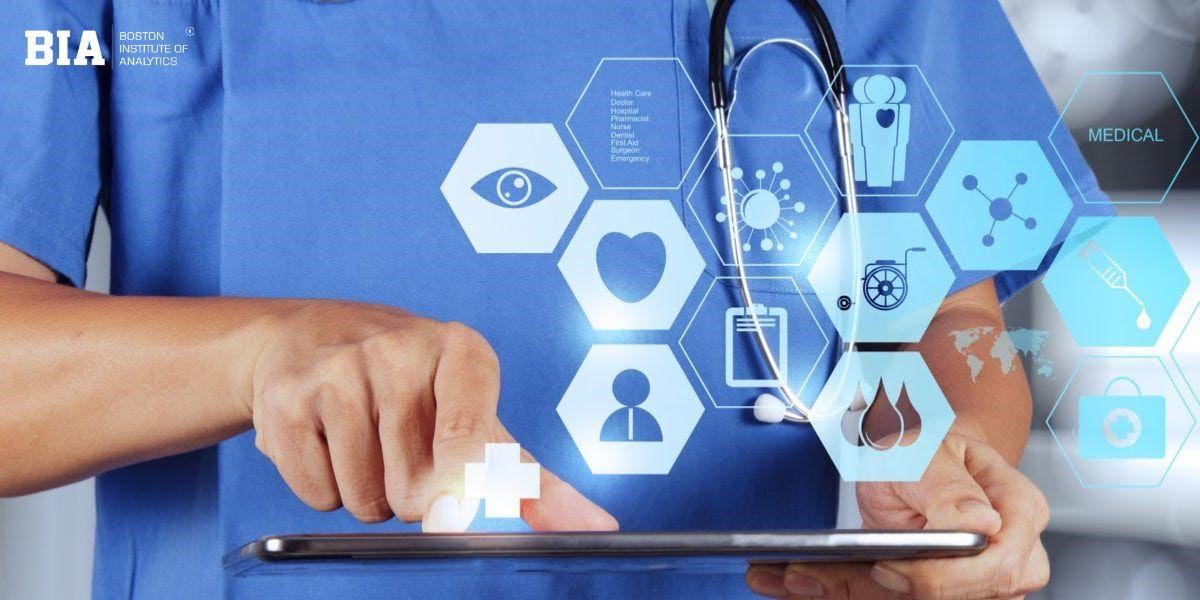Machine Learning in Healthcare: How It’s Saving Lives (and Why You Should Consider a Machine Learning Course)
Machine learning is in the midst of a transformation period for the health industry. Once a futuristic mystique, the ML is now a tangible force of re-creation weaving into the very structure of healthcare systems worldwide-from the busiest metropolitan hospitals in Mumbai to remote clinics in rural India. There is no denying that ML presents these opportunities for early diagnosis, personalized treatment, drug discovery, and, ultimately, linking life.
This feature article delves into the life-altering powers of the machine in healthcare, uncovers the spectrum of its applications, and unravels its potential for saving lives. If you want to know more about the interface between technology and human well-being, then stepping into a Machine Learning Course would be an ideal first step in contributing to this exciting field.
The Diagnostic Revolution: Detecting Diseases Earlier
The machine learning algorithm is saving lives because it offers an element of increase in diagnostic accuracy and speed. Traditional processes of diagnosis often entail manual interpretations of medical images, lab results, or patient history; thus, these processes are very time-consuming and are prone to human errors. ML algorithms on the other hand can see tiny patterns and anomalies which somehow go undetected into human sight.
Medical Imaging Analysis: In fact, ML algorithms are very suitable for analyzing medical images comprised of X-rays, CT scans, MRIs, and ultrasound images. They can be trained to detect initial signs of any diseases such as cancer, diabetic retinopathy, and cardiovascular conditions with very high levels of accuracy. In this manner, AI-powered tools analyze mammograms to show suspicious lesions, thereby giving a chance for the earlier diagnosis of breast cancer which is more treatable. Since highly specialized radiologists are few in India, this ML-powered image analysis serves as a vital aid most especially in the hinterlands.
Pathology and Laboratory Diagnostics: The pathology domain enjoys a revolution from machine learning. Algorithms can sift through digitized tissue slides to find cancerous cells, classify tumors, and forecast the course of the disease: Faster and more precise diagnoses are prepared, allowing for interventions to take place ahead of an emergency. In the same way, in the laboratory diagnosis, ML systems ingest a large amount of patient data from blood tests, genetic information, and more, identifying risk factors for the outbreak of diseases and guiding in the personalization of treatment strategies.
Wearable Technology and Continuous Monitoring: The sheer proliferation of wearable devices such as smartwatches and fitness trackers has created an abundance of physiological data. Machine learning algorithms analyze this data to provide early detection of health concerns, such as irregular heart rhythms, sleep apnea, and perhaps the early stages of an infectious disease. Continuous monitoring through ML can alert a person to the need for proactive steps to seek medical intervention before it is too late to be timely.
Personalized Treatment: Tailoring Care for Better Outcomes
Once considered a very stereotypic medicine approach, it is now getting replaced by personalized therapeutic strategies. Machine learning is a crucial vial in this paradigm shift. ML algorithms can analyze specific patient data and give predictive responses of how a patient will react to any specific therapy, depending upon the genetic constitution of the individual, lifestyle factors, and training history.
Drug Response Prediction: ML-based prediction may identify which drug would likely work for a particular patient given his or her unique biological profile. This drastically cuts down the process of trial-and-error method in treatment selection and hence hastens patient relief and outcome, especially in cases of cancer and autoimmune disorders.
Personalized Dosage and Treatment Plans: ML algorithms use patient data to calibrate the drug dosages and prepare personalized treatment plans. This ensures that the patient receives the right amount of medication at the right time, thereby maximizing efficacy and minimizing potential side effects. For the management of chronic diseases, such personalized treatment plans would help the patients in managing their conditions and enhancing their quality of life.
Predictive Analytics for Patient Risk: Machine learning models have the capability to identify patients at higher risk for the development of certain conditions or adverse events, allowing for preventative measures and proactive interventions to be taken by healthcare providers and may prevent the damage and crisis to one's health. For example, ML could identify patients at high risk of being readmitted to the hospital and therefore support, and follow-up care could be put in place to help curb the reoccurrence of said admissions.

Accelerating Drug Discovery and Development
In the past, drug discovery and development processes were lengthy, expensive, and often unsuccessful. The entire process landscape is beginning to change with machine learning speeding up the different stages, from drug development and potential drug target assessment to clinical trial design.
Target Identification and Validation: Machine learning algorithms can process large biological datasets for potential drug targets to assign probability to their likelihood of success to potentially narrow down the search space in drug discovery, thus saving time and cost.
Virtual Screening and Lead Optimization: Machine learning methods can "virtually" screen millions of chemical compounds for the most generally favourable binding interactions with a particular drug target. This in silico approach can massively increase the speed of lead discovery type tasks. Similarly, machine learning can refine the lead compounds in terms of their efficacy and/or potential toxicity.
Clinical Trial Optimization: Machine learning can also be used to enhance clinical trial design by identifying potential drug candidate’s suitable populations, predicting clinical trial outcomes, and educating design protocols thus reducing the time for potential life-saving drugs to enter the market.
Enhancing Operational Efficiency and Reducing Costs
In addition to direct patient treatment, machine learning is helping healthcare systems to be better managed and make themselves leaner.
Automating Administrative Tasks: Machine learning-fuelled tools can take care of mundane clerical tasks, from scheduling appointments to processing insurance claims to maintenance of medical records. Human resources can be diverted to patient care, and administrative cost could be lowered.
Predictive Resource Allocation: Machine learning can forecast patient volume, resource utilization, or potential disruptions to the supply chain. With this information, healthcare facilities may better decide on the allocation of resources so they have the staff, equipment, and supplies on hand for those occasions when they need to be.
Fraud Detection and Prevention: ML will look through the health care billing data to detect suspicious patterns related to fraud or abuse, consequently leading to prevent financial loss within the system.

The Path Forward: Embracing Machine Learning in Healthcare
Machine learning applications in healthcare are constantly growing and can potentially save so many lives. The prospects are endless in terms of being able to creatively apply machine learning to healthcare as the technology continues to progress and more comprehensive data becomes available.
If you are a person who cares deeply about making a significant impact in the world, a Machine Learning Course can provide you with the basic knowledge and competencies in contributing to this field. There are numerous ways in how you can use machine learning in making a positive human health impact, including creating algorithms for early detection of diseases and conditions, creating personalized treatment modelling, and building optimized operations for healthcare institutions.
Final Thoughts: A Future Powered by Data and Intelligence
Machine learning is no longer a future technology; it is a current reality that is now reimagining healthcare, and helping save lives, in quantifiable ways. From early detection of diseases and personalized treatments to reduced drug discovery time and efficiencies in hospital decisions, everyone is beginning to see the benefits of ML in healthcare.
As we move forward, harnessing data and AI will be critical to create a healthier future for everyone. By investing into understanding, practicing with and creating expertise in ML. This could even mean you enrol in an all in Machine Learning course that can set you up for a life where AI and compassion will improve people’s lives. There is so much potential and we have only just begun.